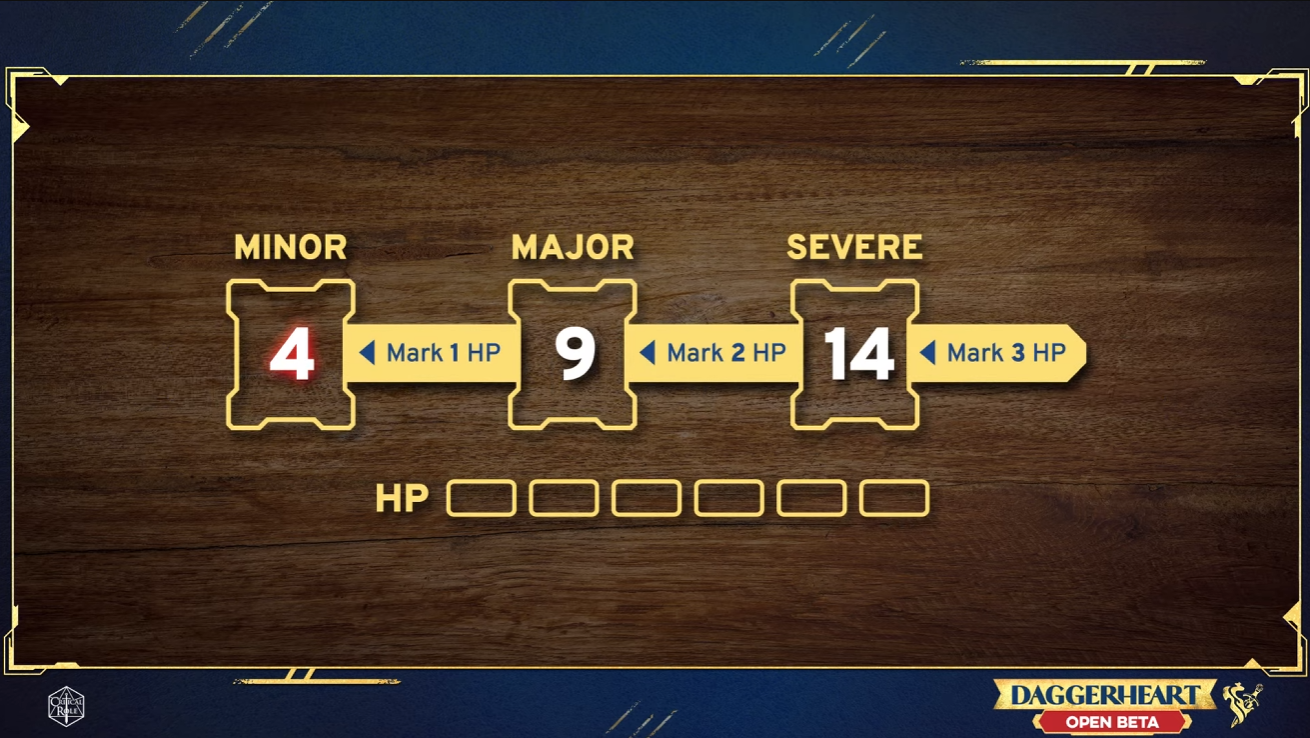Critical Role's homebrew TTRPG Daggerheart is now in open beta, and the good news is it's nothing like D&D
Rolling with hope.
When I heard Critical Role was making a fantasy TTRPG, I was a touch sceptical—Darrington Press' other project, Candela Obscura, branched out from sword and sorcery, adamant in doing its own thing.
But when a group of dice celebrities known for playing D&D announce they're making something D&D-adjacent, you wonder why they're even bothering—beyond the looming danger of a second OGL catastrophe putting your suddenly-major company at risk. Fortunately, that's not at all what Matthew Mercer and co have done, here.
Daggerheart, which is available for playtesting right now, at first glance looks like it's trying to don its best robe and wizard hat. Its classes are basically your standard gamut—even 'Guardian' and 'Seraph' are just secret code for Barbarian and Cleric-flavoured adventurers. But the more you look at it, the more you realise: that's not a wizard, that's a bunch of narrative systems in a trenchcoat.
The core thrust of Daggerheart is its 2d12 (two 12-sided die) rolling system—which saws D&D's vaunted d20 in half. You still add both of your results together, but one of them's a "hope" die and the other's a "fear" die.
If your hope die is higher than your fear die, you get a point of 'hope'—a resource you can spend on stuff like aiding a teammate, much like Masks: A New Generation's "team" mechanic (a system the book mentions as an inspiration).
On the other hand, if your fear die is higher than your hope die, you get a mixed success. Or—if you flubbed the roll overall—something extra bad happens, and the GM gets a fear point to stab you with later.
I thought 'okay, so far, so good. This is like D&D with some extra zest, that's fine.' Then I looked at hit points, and realised I didn't know what the hell I was looking at.
Keep up to date with the most important stories and the best deals, as picked by the PC Gamer team.

Players compare incoming damage to their three damage thresholds. In the example above, a character taking 14 damage marks three pips of hit points, but only two pips if they took 9-13 damage. Where this gets interesting is in how Daggerheart handles armour—while the "evasion" mechanic works very much like your standard D&D AC, armour is a limited resource you burn to reduce damage by a flat amount, potentially knocking you below those aforementioned thresholds. It's all very Blades in the Dark.
By far my favourite shake-up, however, is how Daggerheart's combat scraps initiative entirely. Instead, players often go first—though the DM can spend those fear tokens to say otherwise. They can then take actions in any configuration they'd like, but every time they do, they plonk a token on a combat tracker. Players can choose who takes an action willy-nilly.
Whenever one of the players fails a roll (or rolls and their fear die is higher) the GM gets to sweep up all of those tokens like a card shark winning big at a casino, transforming them into either enemy actions or even more fear tokens. They can also burn two fear tokens to act out-of-order.
This basically means that the action economy is always balanced, but players can go on winning streaks. Streaks which put a swinging sword of Damocles over their head—because the better they do, the more pain is coming their way when things trade hands.

Honestly? I'm all for scrapping the shackles of Initiative. I've been playing a lot of Massif Press's excellent ICON RPG lately, where players always alternate with monsters—but they get to decide which order they act in. Letting players negotiate turns among themselves makes combat way more engaging for just about everybody.
Granted, Daggerheart's novel combat system could cause table arguments. If the game doesn't do enough to distinguish its classes from each other, you could wind up in a situation where power-gamer Steve hogs all the actions because that's what's best for the group. Although, this could blow the door wide open for more support-oriented characters, who can simply chime in when they want to help with buffing spells and healing.
The only thing I'm not immediately excited by is the way Daggerheart does range and movement. While I think Daggerheart is doing something cool by creating a narrative TTRPG with a bit of crunch, it occasionally feels like it's trying to have its cake and eat it too—as is the case here.
Range is clearly geared towards "theatre of the mind play" with vague measurements like close, very close, and far—but the playtest tries to say 'no no, you can use miniatures if you'd like, far is a sheet of A4 paper'. I promise I'm not trying to be mean here, but for "close" measurements, Daggerheart recommends a standard pencil—you know, the thing that gets shorter the more you write with it.

But hey, it's a playtest for a reason. If you want to see how Daggerheart actually plays out—Critical Role ran a live shot yesterday. Even if the game doesn't hit its mark when it eventually hits game shops, it's at the very least interesting, and the system being a D&D-adjacent snoozefest is the only real worry I had.

Harvey's history with games started when he first begged his parents for a World of Warcraft subscription aged 12, though he's since been cursed with Final Fantasy 14-brain and a huge crush on G'raha Tia. He made his start as a freelancer, writing for websites like Techradar, The Escapist, Dicebreaker, The Gamer, Into the Spine—and of course, PC Gamer. He'll sink his teeth into anything that looks interesting, though he has a soft spot for RPGs, soulslikes, roguelikes, deckbuilders, MMOs, and weird indie titles. He also plays a shelf load of TTRPGs in his offline time. Don't ask him what his favourite system is, he has too many.

